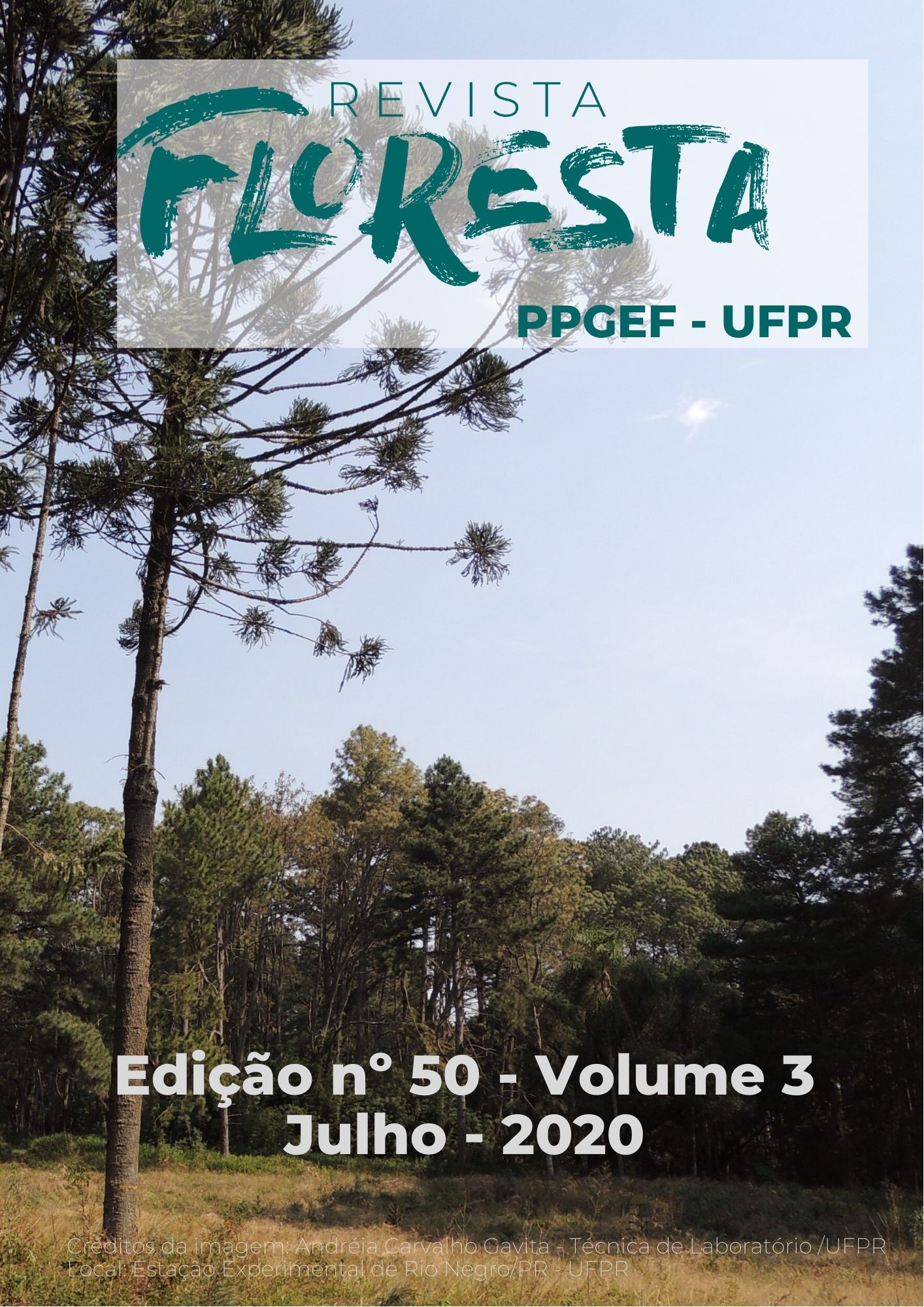AHP APPROACH APPLIED TO MULTI-CRITERIA DECISIONS IN ENVIRONMENTAL FRAGILITY MAPPING
DOI:
https://doi.org/10.5380/rf.v50i3.65146Palavras-chave:
Environmental planning, Management of ecosystems, Geographic information systems, Operational research.Resumo
Geographic Information System tools, combined with mathematical methods for complex geospatial scientific investigations, are essential for environmental zoning. Among these tools, environmental fragility models evaluate criteria related to the physical attributes of the landscape to ensure multi-disciplinarity of the information plans used in a study. However, questions are raised on the priority allotted to each criterion or environmental factor within a multi-criteria analysis model. In this sense, the analytic hierarchy process is another mathematical model that is used in decision theory, which sorts criteria hierarchically. This study aims to use the AHP method as a tool to support multi-criteria decision making as applied to environmental fragility mapping, using the Jequitinhonha River Basin, Minas Gerais, Brazil, as a case study. The application of the AHP method provided a hierarchy of five important environmental criteria for the environmental fragility mapping. The use of AHP allowed the modeling of empirical evaluations in mathematically consistent results, to provide better conciseness in geospatial processes. Therefore, it is an adequate method to minimize subjectivity in environmental and territorial planning. It can also help the management of priority zones for conservation, preservation, or ecological restoration.
Downloads
Publicado
Como Citar
Edição
Seção
Licença
Direitos Autorais para artigos publicados nesta revista são do autor, com direitos de primeira publicação para a revista. Em virtude da aparecerem nesta revista de acesso público, os artigos são de uso gratuito, com atribuições próprias, em aplicações educacionais e não-comerciais.A revista, seguindo a recomendações do movimento Acesso Aberto, proporciona acesso publico a todo o seu conteudo, seguindo o principio de que tornar gratuito o acesso a pesquisas gera um maior intrcambio global de conhecimento.
Conteúdos do periódico licenciados sob uma CC BY-NC-SA 4.0



